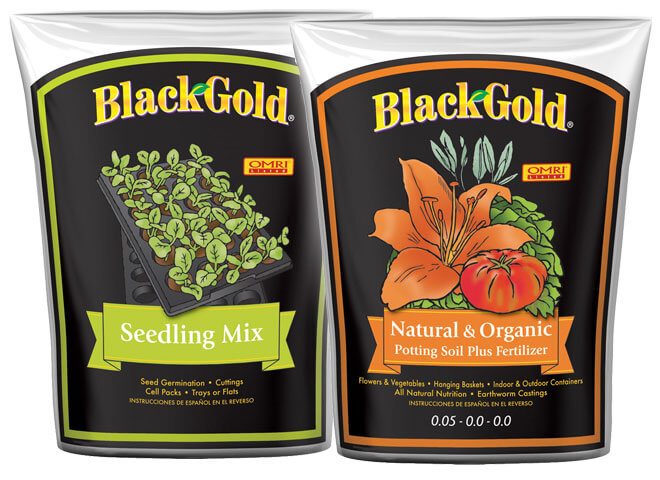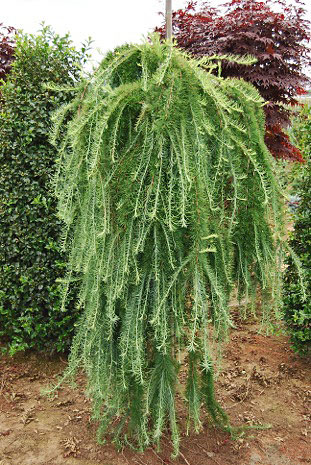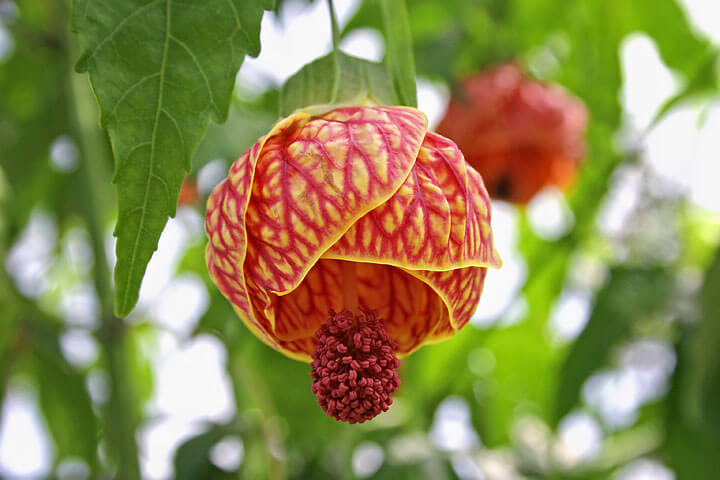
Surprise your guests with an Abutilon in bloom as a house plant. As long as these Abutilons have a good light source, they perform well indoors and then can be planted outside in the spring. This particular Abutilon is called ‘Red Tiger’ and the flowers look like fine cut glass. It is an outstanding plant in a pot, either in a house or on a deck, and when people visit my garden and see this in bloom, they are amazed at the colors and pattern. Be sure to plant Abutilons in Black Gold® All Purpose Potting Soil with Controlled Release Fertilizer.
Tag: Mike Darcy
Schefflera delavayi
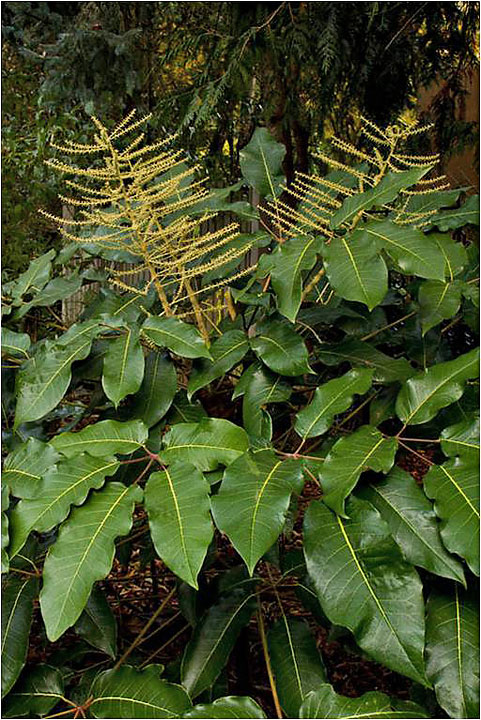
Many of us are familiar with the houseplant Schefflera as it is fairly common and easy to grow. Several years ago I was given Schefflera delavayi and was told it was an outdoor plant that would grow in my Pacific Northwest garden. I was skeptical but planted it outside. Now, after several very cold winters, my plant is thriving with no winter damage, shiny green leaves, and growth to about six feet. It gets morning sun but is protected from hot afternoon sun.
Christmas Trees, Wreaths, Paperwhites
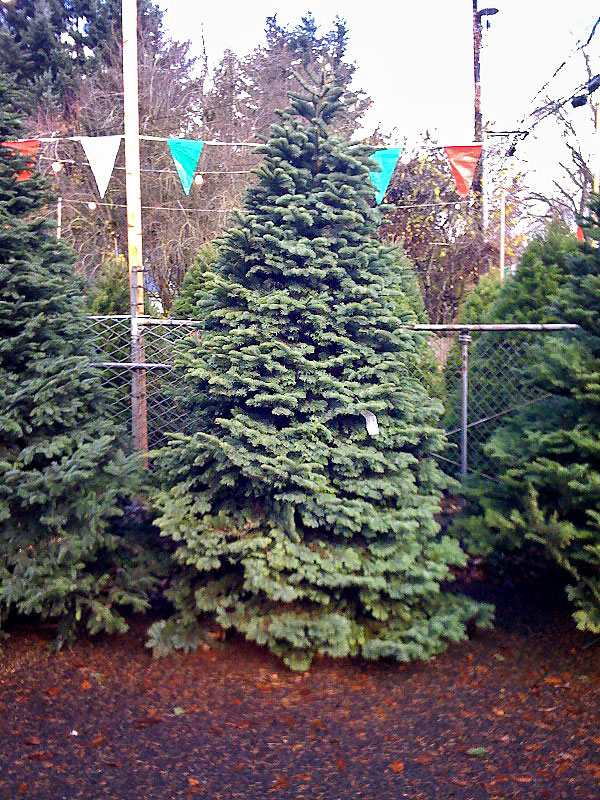 When buying a cut tree at a lot, keep in mind that the tree has probably been cut for several weeks and it could even be several months. When the tree is cut, it is a natural response for it to seal off the cut in order to conserve moisture. Since the butt end is sealed, it can only absorb a small amount of water, if any.
When buying a cut tree at a lot, keep in mind that the tree has probably been cut for several weeks and it could even be several months. When the tree is cut, it is a natural response for it to seal off the cut in order to conserve moisture. Since the butt end is sealed, it can only absorb a small amount of water, if any.
This is the reason it is so important to make a fresh cut of about an inch from the butt of the tree just before the tree is going to be taken indoors. Once this cut has been made, the tree should be placed in a bucket of fresh water or placed in the tree stand with fresh water. You may be amazed at how much water the tree will absorb especially during the first few days. Research that I have seen indicates that there is no need to add a preservative, fresh water works just fine. Check the water reservoir in the tree stand several times a day and refill as necessary. If the water level goes below the butt end of the tree, it will begin to seal itself up and this will prevent uptake of water. It is also a good idea to place your tree where it will not be getting warm air from a heater vent.
Living Christmas Tree
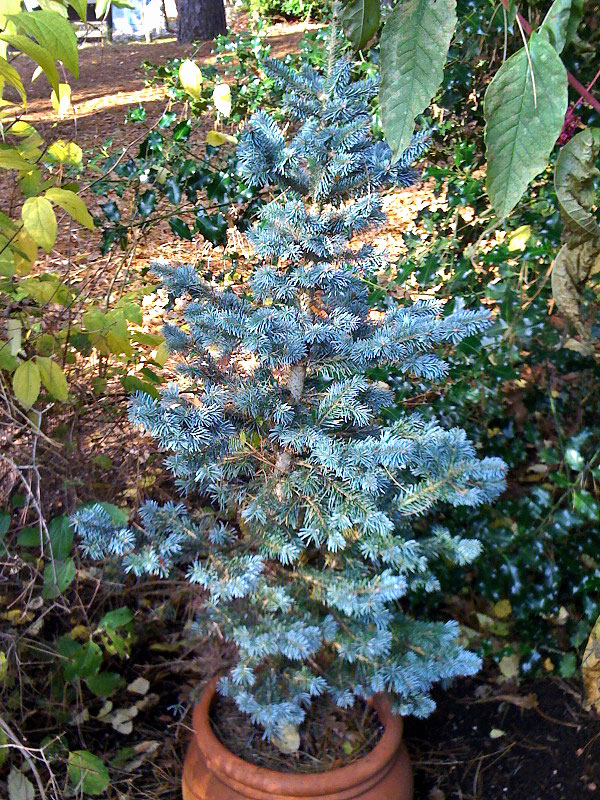 The term ‘living’ tree refers to a tree that is alive and growing and in a nursery container. This is in contrast to a ‘cut’ tree. Check out your local garden center for the varieties of living trees available. Growing in a container with soil, a living tree will be heavy to move around and since they will need to be watered, be sure to have a waterproof saucer under the container.
The term ‘living’ tree refers to a tree that is alive and growing and in a nursery container. This is in contrast to a ‘cut’ tree. Check out your local garden center for the varieties of living trees available. Growing in a container with soil, a living tree will be heavy to move around and since they will need to be watered, be sure to have a waterproof saucer under the container.Wreaths from the Garden
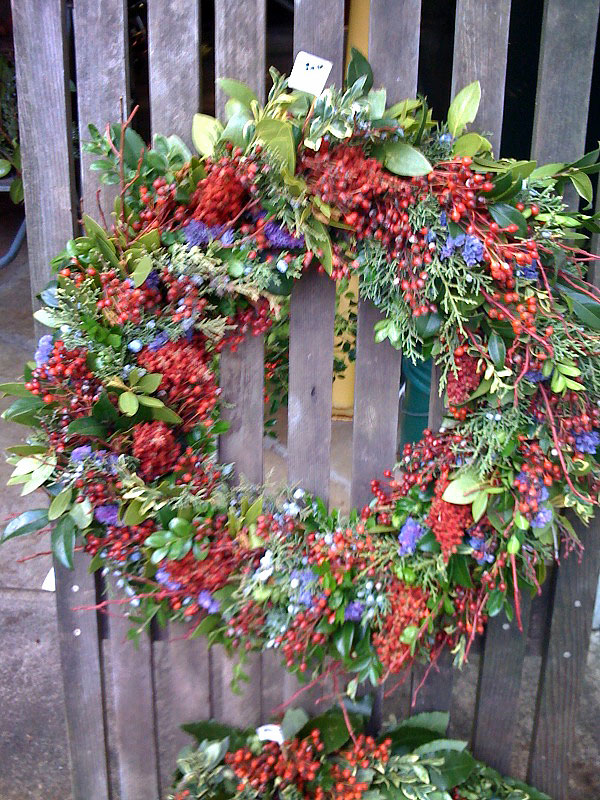 There are some wonderful wreaths being offered for sale, many with fresh material from local growers. If you have a supply of greenery, wreaths can be fun to make and give as gifts especially when the materials are from your garden. Fir, pine and holly are traditional, but consider adding something new.
There are some wonderful wreaths being offered for sale, many with fresh material from local growers. If you have a supply of greenery, wreaths can be fun to make and give as gifts especially when the materials are from your garden. Fir, pine and holly are traditional, but consider adding something new.Paperwhites
Paperwhite narcissus bulbs are very easy to force into bloom indoors. They will often bloom within 3-4 weeks of planting. All that is needed are healthy bulbs and some kind of dish or pot with no drainage. A traditional method is to put in a layer of gravel (many types available at garden centers especially for this purpose), place bulbs on top and bring water level just beneath the bulb. Place container by a window and keep water level constant.
One of the major drawbacks with forcing paperwhites is that they get tall and flop over. Some research from Cornell University indicates that by adding some ethyl alcohol will stunt the growth but you will still get the flowers. About a 5% (no stronger or it may burn plants) solution of ethyl alcohol is required, and so from a 40% distilled spirit such as gin, vodka, rum, etc, you would 1 part of the spirit and 7 parts of water. For this to work, add plain water as normal for the first week and then begin using the alcohol/water solution. Continue using this solution until the plants begin to bloom.
If you do not want to use ethyl alcohol you have for drinking, rubbing alcohol also works. It is about 70% alcohol so 1 part rubbing alcohol to 10-11 parts water would be appropriate. Do not use beer or wine as the sugars in them can cause some problems with plants. I tried this last year and it worked!
Enjoy the season!
Growing Indoor Air Plants
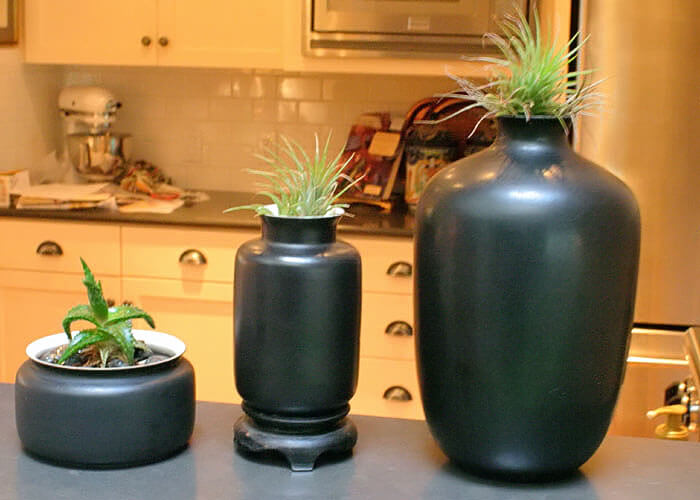 Some of the easiest house plants to take care of are those special plants in the genus Tillandsia, which are commonly referred to as ‘air plants’. They naturally grow in trees in tropical and subtropical regions, so they grow with no soil. In the home they can be placed almost anywhere. Many indoor air plant growers favor growing them in bathrooms where winter air remains moist.
Some of the easiest house plants to take care of are those special plants in the genus Tillandsia, which are commonly referred to as ‘air plants’. They naturally grow in trees in tropical and subtropical regions, so they grow with no soil. In the home they can be placed almost anywhere. Many indoor air plant growers favor growing them in bathrooms where winter air remains moist.
Air plants tend to thrive as long as they are given indirect light (no direct sunlight) and a weekly spray of water. Warm, humid air will also keep them surviving at their best. With this simple regime, they will live for many years.
Try placing them in a vase, as in the photo. There are many wonderful species and varieties of air plants to choose from. These bromeliads can have silvery or green leaves of varying shapes and widths. Colorful, bracted spikes of flowers may appear in plants that are growing happily. Bloom times vary.
Hydrangea 'Shooting Star'
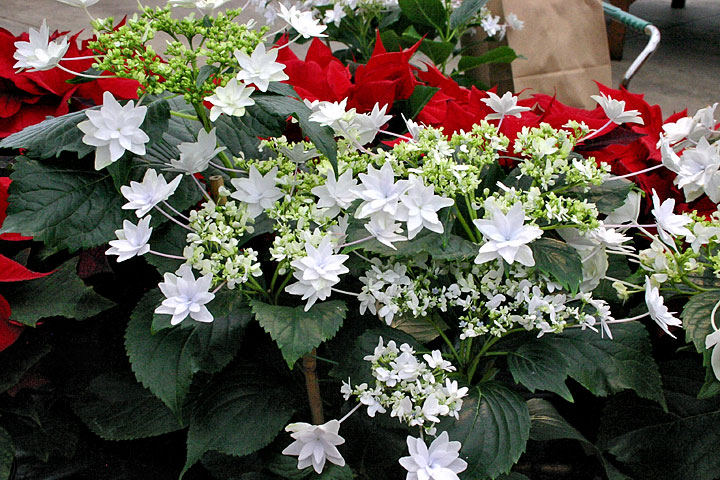 I think a plant makes an especially nice winter gift for the gardener if it is blooming and so can be enjoyed indoors and then later planted in the garden. Hydrangeas from a garden center (not a florist) are usually good choices. One of my favorites is Hydrangea ‘Shooting Star’. It blooms for a long period indoors and once spring has arrived, can be planted in the garden as a permanent plant.
I think a plant makes an especially nice winter gift for the gardener if it is blooming and so can be enjoyed indoors and then later planted in the garden. Hydrangeas from a garden center (not a florist) are usually good choices. One of my favorites is Hydrangea ‘Shooting Star’. It blooms for a long period indoors and once spring has arrived, can be planted in the garden as a permanent plant.
The Visitors: Garden Art
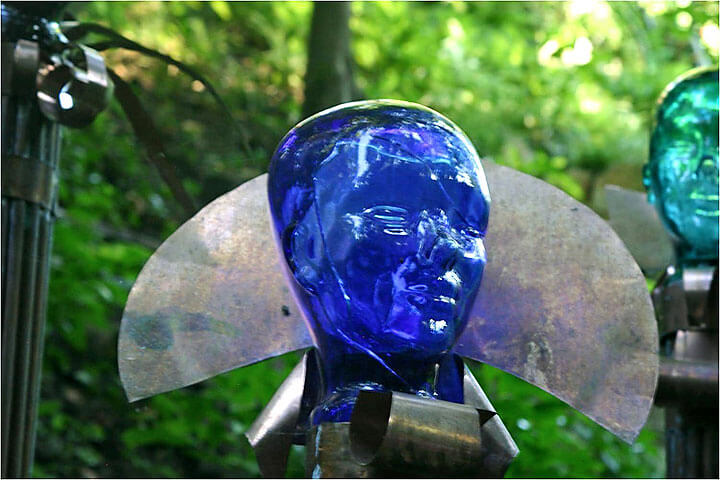
Garden art comes in many shapes, sizes and forms and often can reflect to something about the gardener. I love visiting gardens and seeing creative garden art that has been found, bought, or made. This past year one of the most original pieces I saw was a group of colored mannequin heads mounted on posts. In this garden, they looked as though they belonged and the owner titled them “The Visitors”. Make a resolution for 2012 to collect something unique for your own garden.
Happy New Year!
Indoor Gardening With Black Gold®
There is no reason we need to stop gardening just because summer is ending and winter will soon be here. Many gardeners that I know ‘switch gears’ and set up a special place where they can continue to garden indoors. It might take a little more effort but it is worth it, not only with what you can grow, but the idea you have accomplished what some perceive as difficult.
Think for a moment of the many summer herbs we have enjoyed in our outdoor gardens. Wouldn’t it be great to extend the season with new plants that you have grown in the winter but are perceived as summer plants? If you can supply similar conditions to what the plant has been accustomed to in growing outdoors, then you are off to a good start. One of my favorites is basil and this is an example of a plant that can also be easily started from seed indoors as long as the right conditions are present. The right conditions include the proper soil mix, artificial light, warmth, and space. Artificial light may or may not be a requirement depending on your location and whether you have strong winter light. In Western Oregon and Western Washington, we could certainly need supplemental lighting for most indoor herb plants or plants that are generally perceived as outdoor plants. There are some low light house plants, but I am not including them.
Some garden centers carry indoor lighting kits for homeowners but if you are going to be growing any quantity of plants, you will probably need to find a store that sells materials for hydroponic gardening. Hydroponic garden supply stores will have a good selection of indoor lighting and can give you tips and information depending on your particular circumstances. If you do not know a hydroponic store in your local area, I suggest you go to Sunlight Supply, Hydrofarm or Bloomington Wholesale websites to find a store near you.
If your home has a basement, this can often provide ideal conditions for starting seeds. I have a friend with a basement and he sets up a table with artificial lights, heating pad and everything he needs to start seeds in the winter. He has used this method for many years to start seeds ahead of the season and then he sets plants out when the weather is appropriate for whatever crop he has. Often he grows some of his favorite herbs from seed and then harvests them and uses them in cooking throughout the winter.
Once you have done some research and have the basic supplies, you will need to start with a seedling tray and a good soil. Most garden centers will stock seedling trays which will allow you to plant many seeds in a small area. For soil, Black Gold Seedling Mix is an ideal choice. Black Gold Seedling Mix is formulated with a wetting agent to provide quick water penetration and is a very fine texture to help with germination. It also contains perlite to provide good drainage which is very important with indoor grown container plants. One of the problems that can arise from starting seeds indoors is a disease called damping off. It affects young seedlings and causes them to die. A listener on my radio program once told me of an organic way of preventing damping off. This listener grew many of his plants from seed and used fine grade chicken grit and lightly coated the soil with this after the seeds had been planted. Most farm or feed stores would carry chicken grit and it can usually be purchased by the pound.
Once the seeds have germinated and the young seedlings have developed their true leaves, it is time to transplant these seedlings into an individual pot. Gently lift them out of the plant tray and place them in their new home. I usually use a four inch pot as this size is large enough for the plants to grow for several weeks and the pots are large enough that they are easy to move around. My soil of choice for this four inch pot is Black Gold Natural & Organic Potting Soil. This is 100% organic and contains screened earthworm castings, which Black Gold is famous for using, as well as sphagnum peat moss, compost, forest humus, perlite, and pumice. The perlite and pumice are added to insure good drainage and good aeration, both essential for optimum plant growth. It is important to water these newly transplanted seedlings immediately. If you are a novice at this, be sure you have a tray to hold the four inch pots and to act as a reservoir for holding the excess water as it drains out from the pots.
Always make sure your plants have adequate light. With indoor plants, light is a crucial issue. If plants begin to stretch and become ‘leggy’, that is a signal they are probably not getting enough light. After several weeks and the plants are established and growing, it is probably a good time to fertilize them. I like to use some type of water soluble fertilizer, meaning I can dissolve the fertilizer in a watering can and then fertilize my plants as I water. The fertilizer you select will be dependent on the particular plant and what you expect from it. If you are growing a plant for foliage, you will probably want high nitrogen (first number of fertilizer analysis). If you are going a plant for root development, then look for an analysis with a higher middle number (phosphorus). There are some plants you may want to encourage growth in the early stages and then switch to high phosphorus for bloom and/or root development. Talking with other gardeners that have had experience with indoor gardening can be a wealth of information.
It may sound difficult, but it really is not. It is always fun to try something new in gardening and perhaps this is your year to try growing plants under lights.
Weeping Larch
Fall Color of Coral Bark Maple
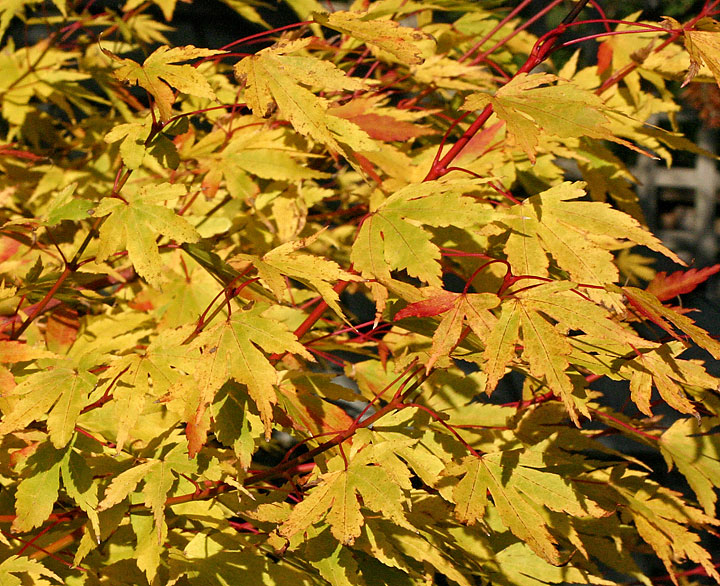
The fall leaf color this year is truly outstanding. A good example is Acer palmatum ‘Sango Kaku’ (Coral Bark Maple) which is a four season plant. Coral colored branches in winter, bright green leaves in summer which turn to golden yellow and make a striking contrast against the red bark. A good tree for a small garden; plant Coral Bark Maple where you can see it in winter. And for good health feed it in fall with Black Gold Earthworm Castings!
Ginkgo Biloba 'Majestic Butterflies'
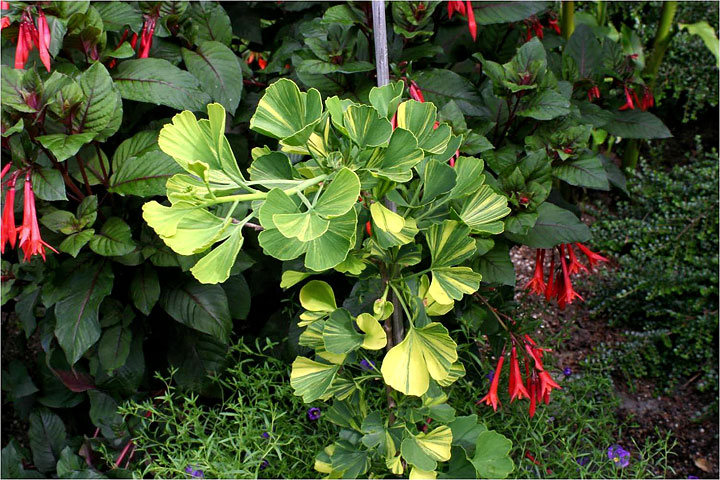 Often when we think of a Ginkgo tree, we think of a very large, street-type tree that is not appropriate for many of today’s smaller gardens. Recently some new types have been developed that are very slow growing and even referred to as ‘dwarf’. A favorite of mine is Ginkgo biloba ‘Majestic Butterflies’, with beautiful variegated foliage; an excellent choice for a container.
Often when we think of a Ginkgo tree, we think of a very large, street-type tree that is not appropriate for many of today’s smaller gardens. Recently some new types have been developed that are very slow growing and even referred to as ‘dwarf’. A favorite of mine is Ginkgo biloba ‘Majestic Butterflies’, with beautiful variegated foliage; an excellent choice for a container.


